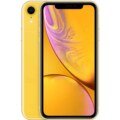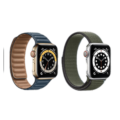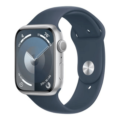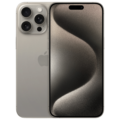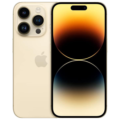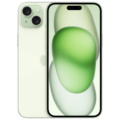- Home
- Apple Devices
- Apple iPad
- Apple iPad Air full specifications
Apple iPad Air full specifications

SPECIFICATIONS
General
| Status | Discontinued |
| Announced |
2013, October 22 |
| Released | 01 November, 2013 |
| Model |
A1474, A1475, A1476, iPad4,1, iPad4,2, iPad4,3 |
| Price Apple iPhone Price in USA, UK, Canada, Australia, India, Pakistan, China, Japan and Europe |
EUR 350 USD 379 |
Network
| Technology |
GSM / CDMA / HSPA / EVDO / LTE |
| 2G Network | GSM 850 / 900 / 1800 / 1900 CDMA 800 / 1900 |
| 3G Network | HSDPA 850 / 900 / 1700(AWS) / 1900 / 2100 CDMA2000 1xEV-DO |
| 4G Network | 1, 2, 3, 4, 5, 7, 8, 13, 17, 18, 19, 20, 25, 26 |
| Speed | HSPA 42.2/5.76 Mbps, LTE Cat3 100/50 Mbps, EV-DO Rev.A 3.1 Mbps |
| GPRS GPRS (General Packet Radio Service) is a packet oriented mobile data service on the 2G and 3G cellular communication system's global system for mobile communications (GSM), Generally, GPRS is used for the purpose of wireless data transfer, such as sharing pictures and videos or browsing the Internet via a mobile phone connection. | |
| EDGE EDGE (Enhanced Data GSM Environment) is a wireless network technology generally considered the next step in the 2G network offers data transfer rates up to four times faster than ordinary GSM networks, Generally, EDGE is used for the purpose of wireless data transfer, such as sharing pictures and videos or browsing the Internet via a mobile phone connection. |
Body
| Dimensions | 240 x 169.5 x 7.5 mm (9.45 x 6.67 x 0.30 in) |
| Weight | 469 g (Wi-Fi) / 478 g (3G/LTE) (1.03 lb) |
| Colors |
Space Gray, Silver |
| SIM SIM (Subscriber Identity Module) is a small card that contains mobile network subscriber's account information. This allows the phone using the card to attach to a mobile network. The SIM card is most commonly associated with GSM and UMTS mobile networks. Moving a SIM card from one phone to another allows a subscriber to switch mobile phones without having to contact their mobile network carrier. SIM cards can also be used by a phone to store limited amounts of data, such as phone numbers and text messages. |
Nano-SIM |
Display
| Display Type Display Technology => A number of display technologies and types used in mobile phones => TFT (Thin Film Transistor), IPS (In-Place Switching), OLED (Organic Light Emitting Diode), AMOLED (Active-Matrix Organic Light-Emitting Diode), Super AMOLED (an even advanced version of AMOLED), Resistive Touchscreen (Resistive touchscreens contain two layer of conductive material with a very small gap between them which acts as a resistance), Capacitive Touchsceen (Capacitive touchscreen technology consists of a layer of glass coated with a transparent conductor) | IPS LCD |
| Size | 9.7 inches, 291.4 cm2 (~71.6% screen-to-body ratio) |
| Resolution | 1536 x 2048 pixels, 4:3 ratio |
| Pixel Density Pixel Density (PPI) is refers to the concentration of pixels on a particular display, measured in pixels per inch (ppi). Pixel density is calculated by dividing the diagonal pixel resolution of a display by its diagonal size, higher pixel density better display quality. | (~264 ppi density) |
| Touch Screen | Haptic Touch |
| Display Protection Display Protection => Gorilla Glass is a special alkali-aluminosilicate glass shield with exceptional damage resistance that helps protect mobile displays from scratches, drops, and bumps of everyday use, It is always better to go for a smartphone with Gorilla Glass for that added protection and peace of mind. | Scratch-resistant glass, oleophobic coating |
| Multitouch |
Camera
| Primary Camera is able to capture photographs and usually videos, The most important characteristics of a camera are the resolution (measured in megapixels), lens focus type (fixed or automatic), higher megapixel cameras are known to capture higher quality photos, but not always a good measurement of the photos quality. |
5 MP, f/2.4, 33mm (standard), AF |
| Video | 720p@30fps |
| Camera Features |
face detection, FaceTime over Wi-Fi or Cellular |
| Selfie Camera |
1.2 MP |
| Video | 720p@30fps |
| Camera Features |
face detection, FaceTime over Wi-Fi or Cellular |
Hardware
| Chipset Chipset is a group of integrated circuits designed to perform one or a more dedicated functions, often with real time computing constraints, Popular smartphones are equipped with more advanced embedded chipsets that can do many different tasks depending on their programming. | Apple A7 (28 nm) |
| CPU CPU (Central Processing Unit) mostly known as processors, CPU processes instructions in order to carry out certain functions that make your device operate properly. Processors are often described as the brain of computers, smartphones and tablets, Smartphones and tablets rely on processors to carry out their every task, Processors are an incredibly important factor in selecting any type of computing device, including your smartphone. | Dual-core 1.3 GHz Cyclone (ARM v8-based) |
| GPU GPU (Graphics Processing Unit) is a single-chip processor designed to rapidly manipulate and alter memory to accelerate the creation of images in a frame buffer intended for output to a display, This includes things such as lighting effects, object transformations, and 3D motion. | PowerVR G6430 (quad-core graphics) |
| RAM (Memory) RAM (Random Access Memory) is a type of computer memory that can be accessed randomly, any byte of memory can be accessed without touching the preceding bytes that allows information to be stored and accessed quickly from random locations. RAM is the most common type of memory found in computer systems, smartphones, tablets and other electronic devices. | 1 GB |
| Internal Storage Internal Storage is a data storage space (flash memory) mostly used in smartphones, tablets and other electronic devices where operating system, apps, music, photos, videos, files and other user data Is stored. | 16GB/32GB/64GB/128GB |
| Card Slot Memory Card Slot is a special slot for inserting a memory card. Memory cards allow you to expand the phone's built-in memory, A memory card (sometimes called a flash memory card or a storage card) is a small storage medium used to store data such as text, pictures, audio, and video, for use on small, portable or remote computing devices such as mobile phones, mp3 players, digital cameras. | No |
| Sensors Sensors are electronic components that detects and responds to some type of input from the physical environment. The specific input could be light, heat, motion, moisture, pressure and location, The output is generally a signal that is converted to use in computing systems, a location sensor, such as a GPS receiver is able to detect current location of your electronic device. |
Accelerometer, gyro, compass |
Software
| Operating System OS => Every computer system run on a base software called Operating System (OS). Operating System controls all basic operations of the computer (such as smartphone, PDAs, tablet computers and other handheld devices). The Operating System allows the user to install and run third party applications (apps), apps are used to add new functionality to the device. | iOS 7, upgradable to iPadOS 12.5.6 |
| Browser (Default) | Safari |
Media
| Loudspeaker | Yes, with stereo speakers |
| 3.5mm Jack | |
| FM Radio | No |
Connectivity
| Bluetooth Bluetooth is a wireless communications technology for exchanging data between mobile phones, headsets, computers and other network devices over short distances without wires, Bluetooth technology was primarily designed to support simple wireless networking of personal consumer devices. | 4.0, A2DP, EDR |
| Infrared Infrared connectivity is an old wireless technology used to connect two electronic devices. It uses a beam of infrared light to transmit information and so requires direct line of sight and operates only at close range. | |
| Wi-fi Wi-Fi is a popular wireless networking technology using radio waves to provide high-speed network connections that allows devices to communicate without cords or cables, Wi-Fi is increasingly becoming the preferred mode of internet connectivity all over the world. | Wi-Fi 802.11 a/b/g/n, dual-band, hotspot |
| Wi-fi Hotspot | |
| USB | Lightning, USB 2.0 |
| NFC NFC (Near field communication) is a set of standards for smartphones and similar devices to establish peer-to-peer radio communications with each other by touching them together or bringing them into proximity, usually no more than a few inches. |
Battery
| Battery Type Battery Type => Cell phones run on various kinds of batteries depending on the manufacturer, phone size or shape and features. There are basically four types of cell phone batteries => Lithium Polymer, Lithium Ion, Nickel Metal Hydride and Nickel Cadmium. | Li-Po |
| Capacity Battery Capacity is a measure (typically in Amp-hr) of the charge stored by the battery, and is determined by the mass of active material contained in the battery. The battery capacity represents the maximum amount of energy that can be extracted from the battery under certain conditions. | 8600 mAh |
| Placement | Non-removable |
| Wireless Charging Wireless Charging (Inductive Charging) uses an electromagnetic field to transfer energy between two objects. This is usually done with a charging station. Energy is sent through an inductive coupling to an electrical device, which can then use that energy to charge batteries or run the device. | Unknown |
| Fast Charging | Unknown |
| Standby Standby Time is the total amount of time that you can leave your is fully charged, turned on and ready to send and receive calls or data transmissions before completely discharging the battery. | Unknown |
| Talk Time Talk Time is the longest time that a single battery charge will last when you are constantly talking on the phone under perfect conditions, Ambient temperature and highly dependent on the cellular network environment such as the distance to the closest cell network tower. | Up to 10 h (multimedia) |
| Audio Playback | Unknown |
| Video Playback | Unknown |
| Internet Usage | Unknown |
MISC
Description
Released in November 2013, the Apple iPad Air introduced portability with its lightweight and slim design. With a sleek aluminum frame, sharp display, and strong battery life, it became revolutionary. Let’s explore its features, performance, and how it fits in today’s rapidly changing tech landscape.
Table of Contents
Design and Display

The iPad Air 1st Generation introduced a major redesign compared to the iPad 4th Generation. With a thinner profile of just 7.5 mm and a weight of 469 grams (Wi-Fi model) or 478 grams (Wi-Fi + Cellular model), the iPad Air set new standards for tablet lightness. The reduced bezel size and streamlined design made it significantly lighter and easier to handle.
The 9.7-inch Retina display, with a resolution of 2048 x 1536 pixels at 264 PPI, provided the same sharpness and clarity that users had come to expect from Apple’s tablets. The display’s thin bezel gave the device a modern, sleek look, enhancing the overall viewing experience without compromising on-screen real estate.
Performance

The Apple A7 chipset, featuring 64-bit architecture, brought significant improvements to tablet performance during its time. Powered by a dual-core 1.3 GHz Cyclone processor, multitasking feels smooth and responsive. It includes PowerVR G6430 graphics for rendering games and visuals effectively without lags. With 1GB of RAM, performance meets basic usage demands but limits heavy multitasking.
While modern apps demand more, the A7 chip excels with apps designed for its era. This combination ensured users enjoyed reliable performance in daily browsing, streaming, and productivity tasks.
Camera

The iPad Air’s cameras provide sufficient features for casual photography and video calls for most users. Its rear 5 MP camera supports autofocus and HDR for improving image quality in everyday photos. It records 1080p videos at 30fps, delivering acceptable results for home video projects.
The 1.2 MP front camera captures selfies and enables FaceTime for communication across devices. With 720p recording at 30fps, the front camera allows smooth video conversations with minimal interruptions. These features fit casual needs but fall short for photography enthusiasts requiring high-quality shots.
Battery Life
Apple claimed that the iPad Air 1st Generation offers up to 10 hours of battery life for web browsing, video playback, or listening to music on Wi-Fi. The device’s battery performance aligns with these claims, providing reliable longevity for a full day of use on a single charge.
This extended battery life is a notable advantage for users who need a tablet for long periods without frequent recharging.
Storage Options
The iPad Air’s multiple storage configurations range from 16GB up to 128GB, providing flexible user choices. Its lack of microSD card support requires reliance on iCloud or other external storage solutions. The 16GB version suits light users handling smaller apps and minimal file downloads on their devices. The 128GB version supports heavy users needing larger capacity for videos, apps, and files.
Software and Updates
Starting with iOS 7, the iPad Air upgraded to iPadOS 12.5.6 during its software lifecycle. Extended update support enabled users to enjoy newer apps and improved security for many years. While unable to run the latest iPadOS versions, it covers essential apps and services efficiently.
Many users appreciate Apple’s focus on keeping older devices functional longer compared to competitors. The iPad Air’s software update longevity remains one of its most commendable attributes, appreciated by its owners.
Connectivity
The iPad Air connects seamlessly through reliable Wi-Fi and Bluetooth 4.0 for wireless devices or streaming. Cellular models offer GPS functionality and LTE support, enhancing their usage for travel or navigation. The dual-band Wi-Fi ensures strong connectivity speeds across compatible routers and networks worldwide.
It features a Lightning port for charging or transferring data via USB 2.0 connections effectively. However, the absence of newer standards like USB-C limits compatibility with modern accessories today.
Audio
The stereo speakers provide clear sound output for streaming videos or attending online meetings. It includes a 3.5mm headphone jack that connects with traditional headphones for private listening sessions. Audio quality delivers a balanced experience, though louder environments challenge its performance output.
Price at Launch
When launched, the iPad Air started at approximately 350 EUR, representing a mid-premium price point. This pricing attracted users seeking performance improvements and better design compared to earlier iPads. Its affordability relative to high-end models increased accessibility among students and casual tablet users alike.
How Does It Hold Up Today?
Though surpassed by modern models, the iPad Air serves casual tasks like browsing, reading, or streaming well. Its thin, durable design holds appeal for light users who prioritize simplicity over advanced features today. Its legacy highlights Apple’s innovation in combining portability, performance, and design within a single device.
Conclusion
The Apple iPad Air (1st Generation) marked a turning point for tablet design and performance evolution. Combining portability, efficiency, and longevity, it became a revolutionary product during its initial launch. Although surpassed, its features ensure relevance in basic everyday tasks when looking back at its success.

